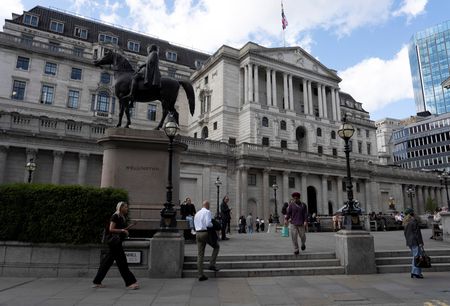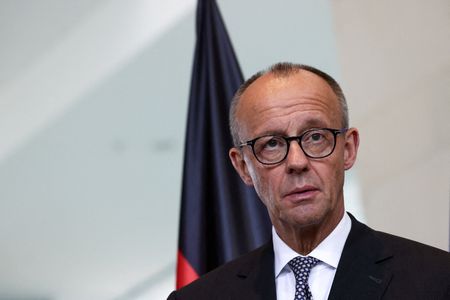By David Milliken
LONDON (Reuters) -The Bank of England on Tuesday lowered slightly to 115 billion pounds ($155 billion) its estimate of the net loss that Britain’s finance ministry will have to pay to cover the central bank’s bond-buying programme.
When the BoE began quantitative easing in 2009 to boost the economy after the global financial crisis, the finance ministry agreed to cover any losses and take any profits.
Gilt purchases ran until late 2021 – after extra rounds to support the economy through the shocks of Brexit and the COVID-19 pandemic – before the BoE put the 875 billion-pound programme into reverse in February, 2022. It is currently running down the stockpile at a pace of 100 billion pounds a year.
While Britain’s finance ministry made a 124 billion-pound profit from the programme when interest rates were near zero, the BoE now faces heavy losses which are set to reach 30 billion pounds annually in the coming years.
The shortfall reflects the fact that BoE interest rates are now higher than the average yield of the bonds it bought, as well as losses which are crystallised when the bonds are sold, as their market value is now lower than what the BoE paid.
Politicians, as well as former BoE deputy governors Charlie Bean and Paul Tucker, have criticised how the QE programme has been structured, saying it puts too much of a burden on the already stretched public finances.
But BoE Governor Andrew Bailey has said changes would disrupt monetary policy and the cash loss figure ignores the stronger economic growth and lower government borrowing costs brought by QE.
The BoE’s 115 billion-pound estimate of the net loss, which taxpayers will have to foot, takes into account the 124 billion-pound profit received in the years up to 2022.
The projected loss is similar whether the BoE sells bonds at a pace of 100 billion pounds a year or slows to 80 billion pounds, and assumes the BoE continues to cut interest rates – currently 4% – in line with market expectations.
A previous estimate made in the central bank’s last quarterly report in May showed a 120 billion-pound loss, while a year ago the BoE predicted a loss of 95 billion.
The BoE said losses would be much smaller at around 55 billion pounds if interest rates fell to what staff in 2018 judged to be their neutral level of around 2.5%. Markets now see BoE rates bottoming out at around 3.5% next year.
($1 = 0.7428 pounds)
(Reporting by David Milliken, editing by Ed Osmond)











